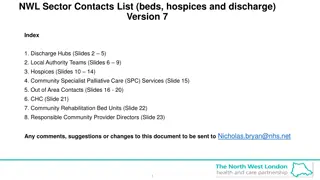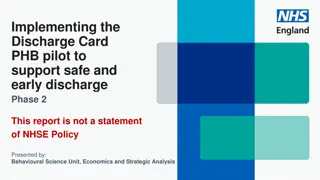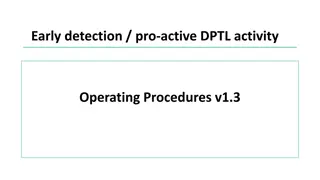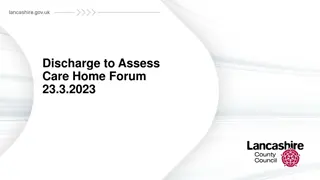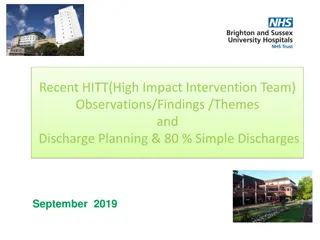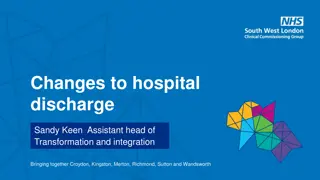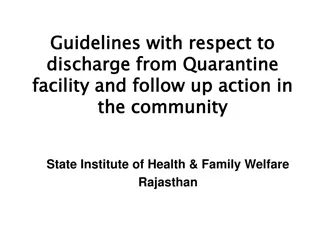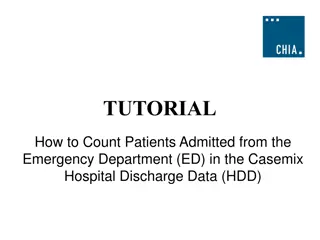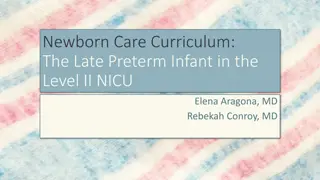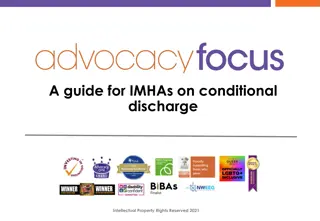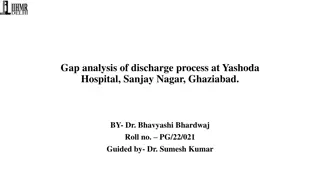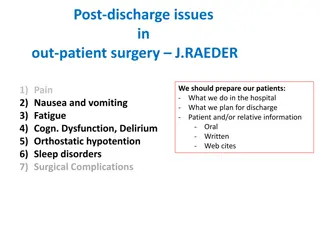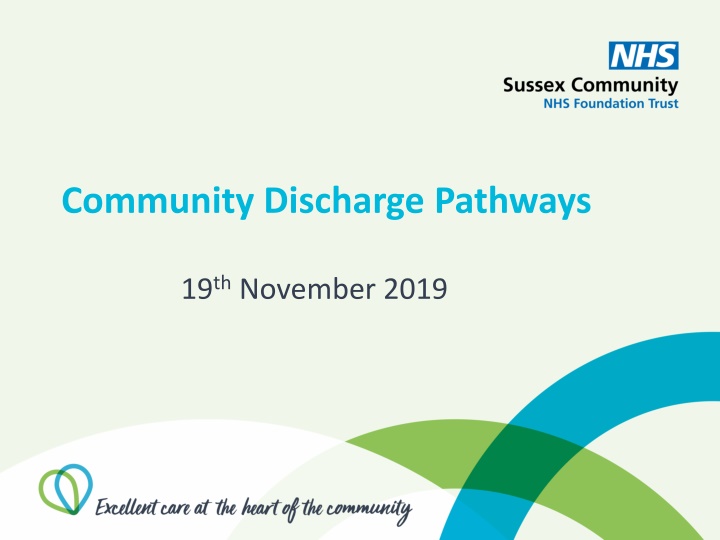
Community Discharge Pathways
Community Discharge Pathways are vital for post-hospital care, ensuring patients receive necessary therapy, home care, and nursing support. Responsive Services play a key role in supporting patients post-discharge, preventing unnecessary hospital readmissions, and promoting better long-term outcomes through services like D2A:Home.
Download Presentation

Please find below an Image/Link to download the presentation.
The content on the website is provided AS IS for your information and personal use only. It may not be sold, licensed, or shared on other websites without obtaining consent from the author. If you encounter any issues during the download, it is possible that the publisher has removed the file from their server.
You are allowed to download the files provided on this website for personal or commercial use, subject to the condition that they are used lawfully. All files are the property of their respective owners.
The content on the website is provided AS IS for your information and personal use only. It may not be sold, licensed, or shared on other websites without obtaining consent from the author.
E N D
Presentation Transcript
Community Discharge Pathways 19thNovember 2019
Discharge Pathways There are broadly 4 discharge pathways from RSCH: Eventually, Pathways 2 and 3 will merge into one single community discharge pathway.
Pathway 2 Community D2A (Responsive Services)
What does Responsive Services provide? Responsive Services (RS) provide 2 key functions: supporting patients post discharge with any homecare, therapy or community nursing needs (D2A Home) Avoiding unnecessary admissions to hospital by supporting patients at home with any care, therapy or nursing needs The service operates 7 days a week 365 days a year, 8am to 8pm
What is D2A:Home? Discharge 2 Assess: Home is a function of Responsive Services which enables a patient to leave an acute hospital inpatient setting without having had a therapy and/or social care assessment in hospital, providing they are safe to be in their home and are medically optimised. Through D2A:Home the therapy and/or social care assessments are undertaken in the patients home to ensure a more informed decision about the patients on-going therapeutic and social care needs is made. Evidence suggests this leads to better long-terms outcomes and reduced need for long- term care. D2A:Home is not for patients requiring 24 hour care; community inpatient care; where they have been fully assessed in an acute hospital inpatient setting; or for a patient with an existing social care package (a restart). 5
Who is eligible? All patients requiring a therapy and/or social care assessment are eligible in line with the following two eligibility questions: Is the patient medically optimized (therefore doesn t require further medical or inpatient care)? Is the patient safe between visits/calls including overnight? If both are yes, then the patient is eligible for D2A:Home. There are some specific exclusions from the service for example, patients requiring end of life care and those awaiting assessment for Continuing Healthcare (CHC). 6
Our response We commit to meeting the patient at home within 2 hours, depending upon time of discharge. We cannot accept discharges after 4pm discharges before midday enable to us to support more patients! The patient will be met at home by an experienced therapist and/or nurse to complete an initial assessment and determine the patients health and care needs. The patient will remain under the care of Responsive Services until ongoing health and/or care needs are identified and appropriate referrals are made to onward services.
How to refer to Pathway 2 D2A Home? Telephone for Level 5 only: 01273 242117 option 1 then option 1 Email for all other wards: Sc-tr.rsreferralhub@nhs.net Required paperwork: Ready to transfer form Observation chart
Pathway 3 Community Bed
Community Inpatient Rehab A range of community inpatient rehabilitation beds are available for patients who medically optimised but not safe between care calls and require a period of rehabilitation before they are ready to go home. Lindridge 25 beds Downlands - 5 Victoria 8 Lewes -26* Uckfield -14* Crowborough -18* * These beds are also used by patients from ESHT and MTW IN REACH MODEL FOR B&H BEDS, PATIENTS REQUIRING PHYSIO/OT REHABILITATION WHO HAVE IDENTIFIED GOALS Nurse assessor will undertake full assessment and map patients to the appropriate empty beds
How to refer to Pathway 3 (community beds) Complete Ready to Transfer form and (SAP form if patient on Level 5) Email completed form to Referral Management Hub: Sc-tr.rsreferralhub@nhs.net The referral will be triaged to ensure all the information is available to enable a safe discharge. If necessary, the patient is assessed by our nurse assessor to ensure the patient is suitable for community inpatient rehab. A bed is identified that meets the patients needs and the ward is informed.
HOSPITAL @ HOME Is a BSUH FOCUSED ONLY short term service for patients who are medically stable to be treated at home but still require sub-acute care ACCEPTING CRITERIA: Must be under a BSUH Consultant/ patient in hospital Adult over 18 Must be under an agreed pathway Must have a follow up appointment booked prior discharge and/or detailed discharge plan CURRENTLY ACCEPTED PATHWAYS: IV ABX up to BD & elastomeric pump(TAZOCIN) complex dressing that requires more than one visit per day VAC/pico dressing Abdominal drain flushes up to twice daily FUTURE PATHWAYS Heart failure requiring iv furosemide Sub cut fluids for hydration High output stoma care If you have a category of patient that is constantly impacting on your flow, that could with a clear plan be managed safely at home please get in contact
REFERRAL TO H@H IV ABX REFERRALS: MUST go via OPAT service only EVERYTNING ELSE via Email to Sc-tr.rsreferralhub@nhs.net Required paperwork: MUST BE SENT: Discharge letter Observation chart OPTIONAL DEPENDING ON PT: Any other important clinical information Wound care plan Any query please contact our coordinator on 07785661004 Depending on capacity referrals <2 pm aim to see them on the same day
Next steps Set up a System Discharge Group to improve processes for system supported discharges and address any issues Embed simplified discharges pathways across RSCH Move towards telephone referrals

